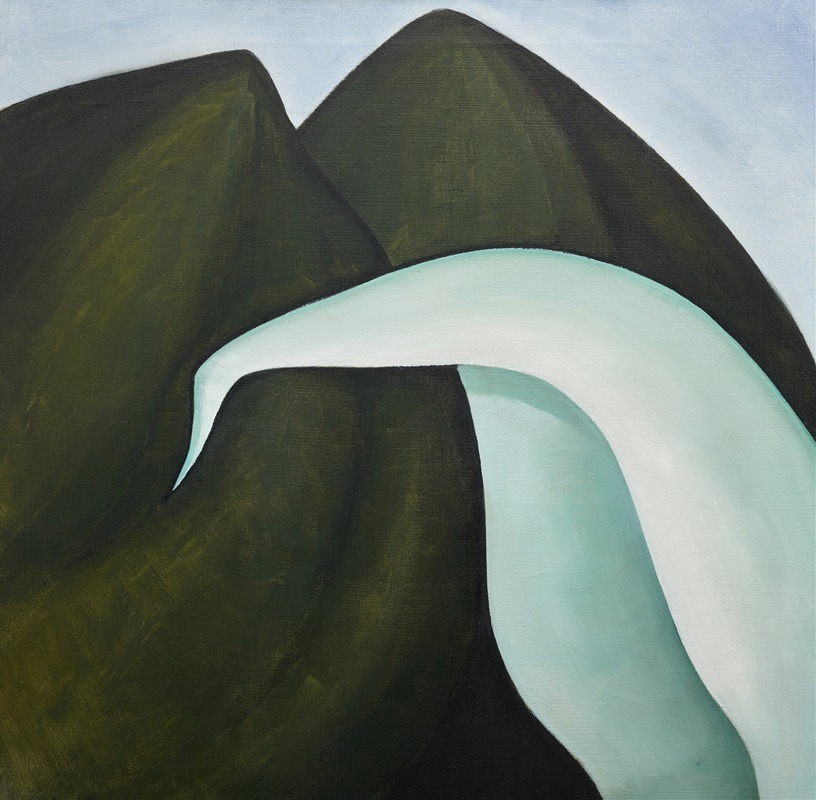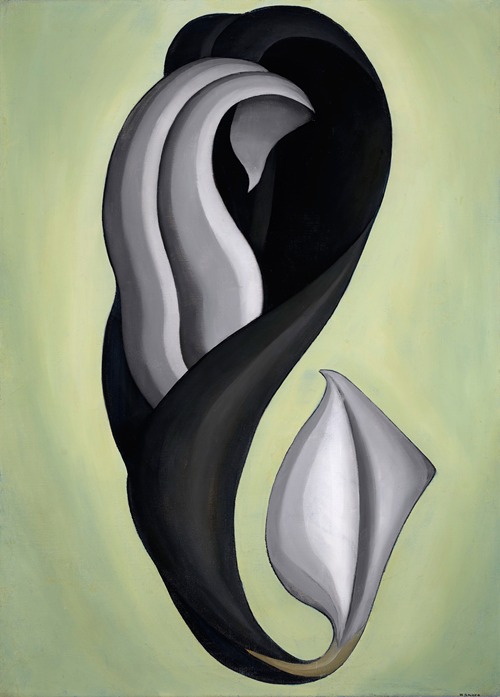
Early in her life Henrietta Shore was recognized as a modern artist whose powerful, honest interpretations of nature assured her a place in art history. Despite critical accolades, the combination of a number of factors resulted in Shore's dying virtually unknown and destitute.
Born in Toronto, Canada, Shore was encouraged in her artistic interests by her mother. A profound connection with nature, first felt and articulated at age 13, spurred Shore to paint. I was on my way home from schooL and saw myself reflected in a puddle. It was the first time I had seen my image completely surrounded by nature, and I suddenly had an overwhelming sense of belonging to it-of actually being part of every tree and flower. I was filled with a desire to tell what I felt through painting.
Shore went to New York to study at the Art Students League with William Merritt Chase and Robert Henri. Her fellow student there was Georgia O'Keeffe. Shore's early training in New York encouraged both a traditional approach to picture making as well as a more contemporary take proposed by Henri that embraced a fresh consideration of subject matter. Shore's use of color and her direct emotional appeal reflect Henri's influence. Shore continued her studies at Heatherly's Art School in London and in Holland. During her twenties, she was in exhibitions in Toronto, Paris, London and Liverpool.
In 1913 Shore moved to California and, as was typical for her generation of artists, she explored a number of styles. Shore resisted any attempts to pigeon hole her as a member of a specific group or movement. Despite this independent course, California critics responded favorably, calling Shore's paintings thoroughly modern. While the demand for her pictures was strong, Shore worked slowly and was reluctant to part with paintings. Her exposure and sales began to suffer from her lack of ability to promote her work.
In 1920 Shore returned to New York City. There she received additional encouragement for her semi-abstract paintings. Shore's use of bright color, polished surfaces and simple organic form was in keeping with the stylistic approach of other American modernists. In 1923, Shore and Georgia O'Keeffe exhibited simultaneously in New York. Interestingly, the critical response focused much more enthusiastic attention on Shore.
When the artist returned to Los Angeles in 1923 it was with an established reputation in place. In 1927 she was given an exhibition at the San Diego Art Museum. The director, Reginald Poland, wrote that Shore was unquestionably one of the most important living painters in this country, as strong as any on this coast for the intellectual, technical, decorative and aesthetic qualities of her latest work.
More than likely Caribbean was painted in the late 1920s or early 1930s after Shore lived for a season in Mexico. There she saw Diego Rivera's works and did portraits of Jose Orozco and Jean Charlot. Caribbean is similar in approach to those portraits-uncomplicated rounded forms and flat areas of strong color are evident in each of these paintings. Heavy outlines enhance the simplicity of the forms and the vibrancy of Shore's palette. In Caribbean the straightforward clear gaze and sincere expression convey dignity to the sitter.
In 1927 Shore met Edward Weston and began a friendship that would profoundly affect both of their lives. Weston, then an unknown and struggling photographer, recorded in his Daybooks that he was struck by the intensity and accomplishment of Shore's paintings. Weston found in Shore inspiration and dedication. Additionally, they shared a desire to explore the relationship between art and nature. Weston made his first photographs of nautilus shells in Shore's studio where he had been moved by Shore's paintings on the same subject.
From letters between the two artists and Weston's Daybooks we learn that Shore worked slowly and methodically. Her output was minimal and there was a constant struggle for money. Occasional portrait commissions and teaching jobs were accepted as a way to supplement her meager income.
In 1930, Shore followed Weston to Carmel, California. She wanted to live closer to the natural world that had become the subject of her painting. This choice of self-imposed isolation would add to Shore's anonymity and her poverty. She exhibited rarely after a retrospective at the M. H. deYoung Memorial Museum in 1933. In her fifties and poor, Shore received six public commissions from the Treasury Relief Art Project, an elite program of the WPA. She made four murals for the Santa Cruz Post Office, one for the Old Customs House in Monterey and one for the Monterey Post Office.
A couple of years after completing the murals, acquaintances visited Shore in Carmel and found her home and studio messy and deteriorating. Concerned, they erroneously took it upon themselves to commit Shore to a mental health facility. In 1963 at the age of 83, Henrietta Shore died in a mental institution in San Jose with her art virtually unknown. Posthumously, Shore has received growing recognition and her works are included in collections at the Los Angeles County Museum of Art, the Oakland Museum of Art and the Monterey Peninsula Museum of Art.
